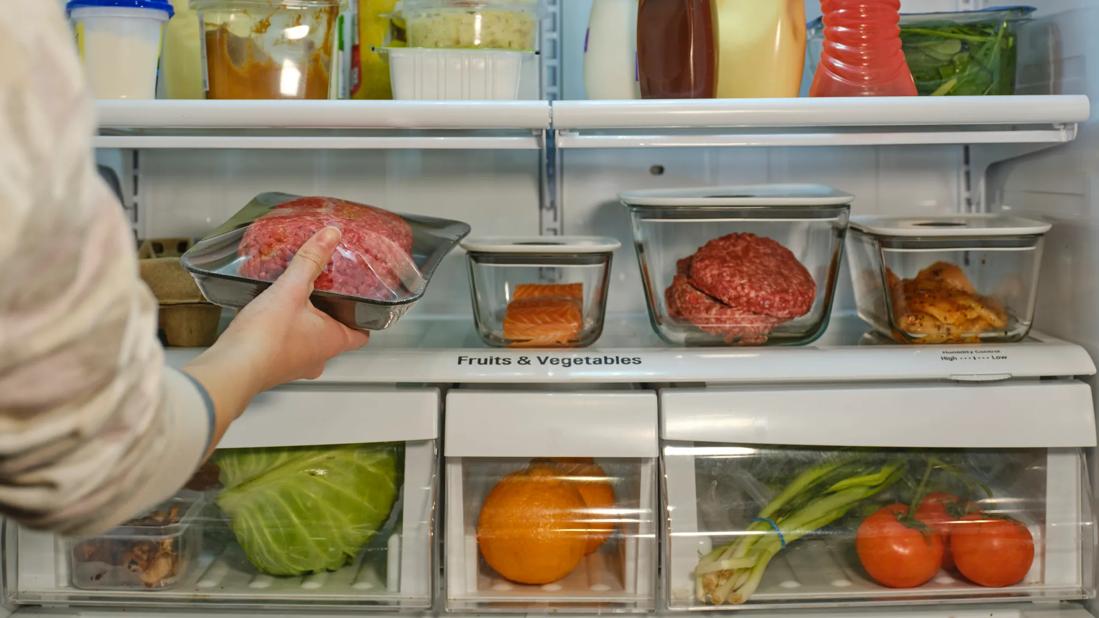Pay close attention when you’re grocery shopping, setting up your kitchen and dining out

Celiac disease and the need to adopt a strict gluten-free diet often come later in life. Changing habits and adjusting to this new way of eating can be difficult, especially if you’re in your 40s or older when diagnosed with the condition.
Advertisement
Cleveland Clinic is a non-profit academic medical center. Advertising on our site helps support our mission. We do not endorse non-Cleveland Clinic products or services. Policy
To help get your footing, try these tips from registered dietitian Anna Taylor, RDN, LD.
There are plenty of gluten-free options on most grocery store shelves. It’s just a matter of knowing where to look.
For starters, the perimeter of the store is mostly a safe space if you’re avoiding gluten, says Taylor. This includes shopping areas dedicated to foods that are naturally gluten-free, including:
“You’re not going to have worries with plain meats, fruits and vegetables or dairy products,” notes Taylor. “Be careful, though, if there are ‘extras’ on the items, as there may be gluten in flavorings, sauces or marinades.”
Don’t assume any product is gluten-free. Look closely at the ingredient list of anything you put in your grocery cart to check for wheat or any other red-flag ingredients. You’ll be surprised at how many foods are unexpected sources of gluten.
Any packaged product labeled as “gluten-free,” “without gluten,” “free of gluten” or “no gluten” must contain less than 20 parts per million of gluten — the lowest detectable level in foods — according to the U.S. Food and Drug Administration (FDA)’s safety standards.
Advertisement
Be cautious of products marked as “wheat-free.” That’s not the same as gluten-free.
“It’s a good idea to get in the habit of checking every product’s ingredient list, regardless of the claims made on its packaging,” Taylor advises.
Thankfully, many stores offer gluten-free pasta, pizza, flour, grains and other items to satisfy your appetite, she adds. (But watch for excess fat, sugar and sodium in those specialty items.)
If you’ve never cooked gluten-free before … well, odds are you’re going to need to make changes in your kitchen and pantry to accommodate a new way of eating.
Start by replacing obvious gluten-containing grain products — like most all-purpose flour — with products made from gluten-free grains, recommends Taylor. (Add these to your grocery list from above!)
Then, start reviewing the ingredient lists on condiments, sauces and dressings to see what products may have gluten. As you find ones that need to go, search for gluten-free replacements.
Now, let’s think about how you store gluten-free items. If you live with others who eat gluten, try to set up separate areas for gluten-free foods to avoid cross-contamination.
Also, it’s a good idea to have small appliances dedicated for use with gluten-free ingredients. For example, gluten-free bread should be toasted in a toaster only used for gluten-free products. Otherwise, the crumbs from regular bread can contaminate your gluten-free bread.
The same theory applies to air-fryers, toaster ovens and similar cooking devices.
“Take it all in steps,” recommends Taylor. “You’re not going to overhaul your entire kitchen and eating pattern overnight. It’s going to take a little time.”
Preparation is key if you’re eating at a restaurant and need to avoid gluten.
Start by going online and checking out the menu ahead of time to look for dishes that sound good to you. Many restaurants post nutritional info that specifically addresses which dishes contain gluten.
Consider calling the restaurant, too, to share your dietary needs and ask if they can safely prepare your food without gluten or risk of cross-contamination.
“It’s always good to reach out,” says Taylor. “These sorts of questions are common for restaurants, and someone should be able to get you answers. If they can’t or seem unwilling to check … well, that may be a hint that perhaps you should look elsewhere.”
Once you’re at the restaurant, make sure to tell your server that you can’t be exposed to gluten. Be specific and firm about your dietary needs. Make sure they understand the importance of your request.
“You might say something like, ‘I have celiac disease, so I can’t eat foods that contain or have come in contact with gluten or else I’ll get very sick. Can you double-check that this will be safe for me?’” she suggests.
Advertisement
Your server may offer you a gluten-free menu or recommend dishes that can be prepared gluten-free. Don’t be afraid to ask questions either.
Pay particular attention to these items:
Adopting a gluten-free diet isn’t a willy-nilly decision. It’s something you’re doing for your health, given the potential danger or consequences of eating gluten.
Advertisement
It’s important to let those closest to you — such as family members, friends and coworkers — know that you’re eating differently, says Taylor. Advocate for yourself and share with them what you’re comfortable sharing.
“Talk about why it’s so important for your health to avoid gluten, as a lifelong gluten-free diet is the only effective treatment for celiac disease,” she continues. “Focus on the health aspect and how gluten can make you sick. Answer questions and help them understand how any amount of gluten can be damaging to you.”
Be open about your needs and you’ll find, more often than not, that people will do what they can to accommodate them. That could mean choosing to meet at restaurants with gluten-free options or making sure dishes are safe for you at gatherings.
Bottom line? “A gluten-free diet may be a big transition, but it’s a necessary one if you have celiac disease,” says Taylor. “And know you’ll be feeling better as you settle into your new gluten-free habits.”
Advertisement
Learn more about our editorial process.
Advertisement

You have plenty of options to fill your belly, but caution is required when preparing meals

The protein lurks in ingredients like oats, chips, beer and processed lunch meat

An easy check for all of the items in your shopping cart

Questions and answers about eating a gluten-free diet

The gluten-free, fiber-rich superfood supports gut and heart health and can help with diabetes management

The conditions have similar symptoms, but are very different

Washing your hands, thoroughly cleaning kitchen tools and preparing meat separately can reduce the risk of foodborne illness

Alpha-gal syndrome has become more common and is a leading cause of anaphylaxis

The best parenting style balances enforcing rules and showing plenty of love

Tips include cutting back on sugar, focusing on exercise and managing stress

It can be harder to let go when you’ve invested time, energy and emotions — but it might be the healthier choice long term